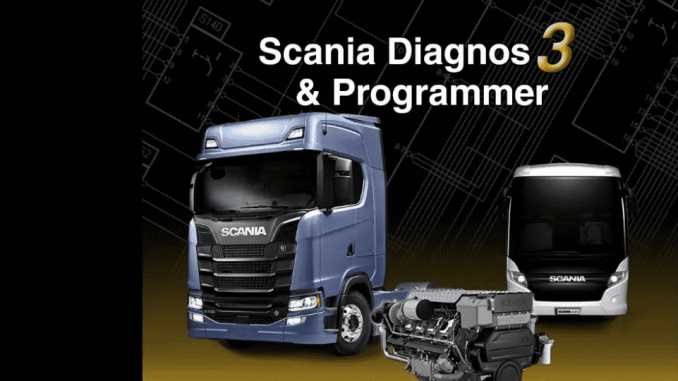
Using Scania Diagnos & Programmer 3 (SDP3) for programming and calibration tasks involves several steps and precautions to ensure the procedures are carried out effectively and safely. SDP3 software is designed specifically for Scania vehicles, providing advanced diagnostics, programming, and calibration capabilities. Below is a general guide on how to use SDP3 for these tasks, but please note, specific procedures can vary depending on the vehicle model and the software version of SDP3.
Preparation
- Ensure Compatibility: Before beginning, make sure your vehicle model and control units are supported by the version of SDP3 you are using.
- Connect Hardware: Connect your PC to the vehicle using the appropriate VCI (Vehicle Communication Interface). Ensure that the connection is secure and the VCI is recognized by your computer.
- Safety Measures: Follow all safety precautions, including turning off the vehicle’s ignition and ensuring you are working in a safe environment.
Launching SDP3
- Open SDP3: Start the SDP3 software on your computer. Wait for the initial setup processes to complete.
- Vehicle Identification: Allow SDP3 to identify the vehicle automatically or enter the vehicle details manually if required. This step is crucial for ensuring that the correct programming and calibration options are available for your specific vehicle.
Programming and Calibration
- Navigate to Control Units: Once the vehicle is identified, navigate to the ‘Control Units’ or similar section where you can select the specific unit you wish to program or calibrate.
- Select Task: Choose the programming or calibration task you need to perform. SDP3 offers a range of options, from simple parameter changes to complete software updates.
- Backup: If available, make a backup of the current settings or software. This step is critical in case you need to revert to the original settings.
- Perform Task: Follow the on-screen instructions carefully to perform the programming or calibration task. This may involve selecting specific parameters, uploading new software, or following step-by-step calibration guides.
- Verification: After completing the task, use SDP3 to verify that the changes have been applied correctly. This might include running diagnostics to ensure no new errors have been introduced.
Final Steps
- Clear Fault Codes: If any fault codes were generated during the process, clear them using SDP3.
- Test Drive: If possible and safe, perform a test drive to ensure the vehicle operates as expected with the new settings or software.
- Documentation: Document the changes made for future reference, including the date, vehicle identification, and details of the programming or calibration performed.
Tips
- Stay Updated: Regularly update your SDP3 software to access the latest features and support for new vehicle models.
- Follow Guidelines: Always follow the specific guidelines and procedures provided by Scania for programming and calibration tasks.
- Seek Support: If you encounter issues or uncertainties, seek support from Scania or a professional with experience in using SDP3.
Remember, programming and calibration tasks can affect the vehicle’s operation and safety. If you are not experienced or certified in using SDP3, it is recommended to consult a professional or contact Scania support for assistance.